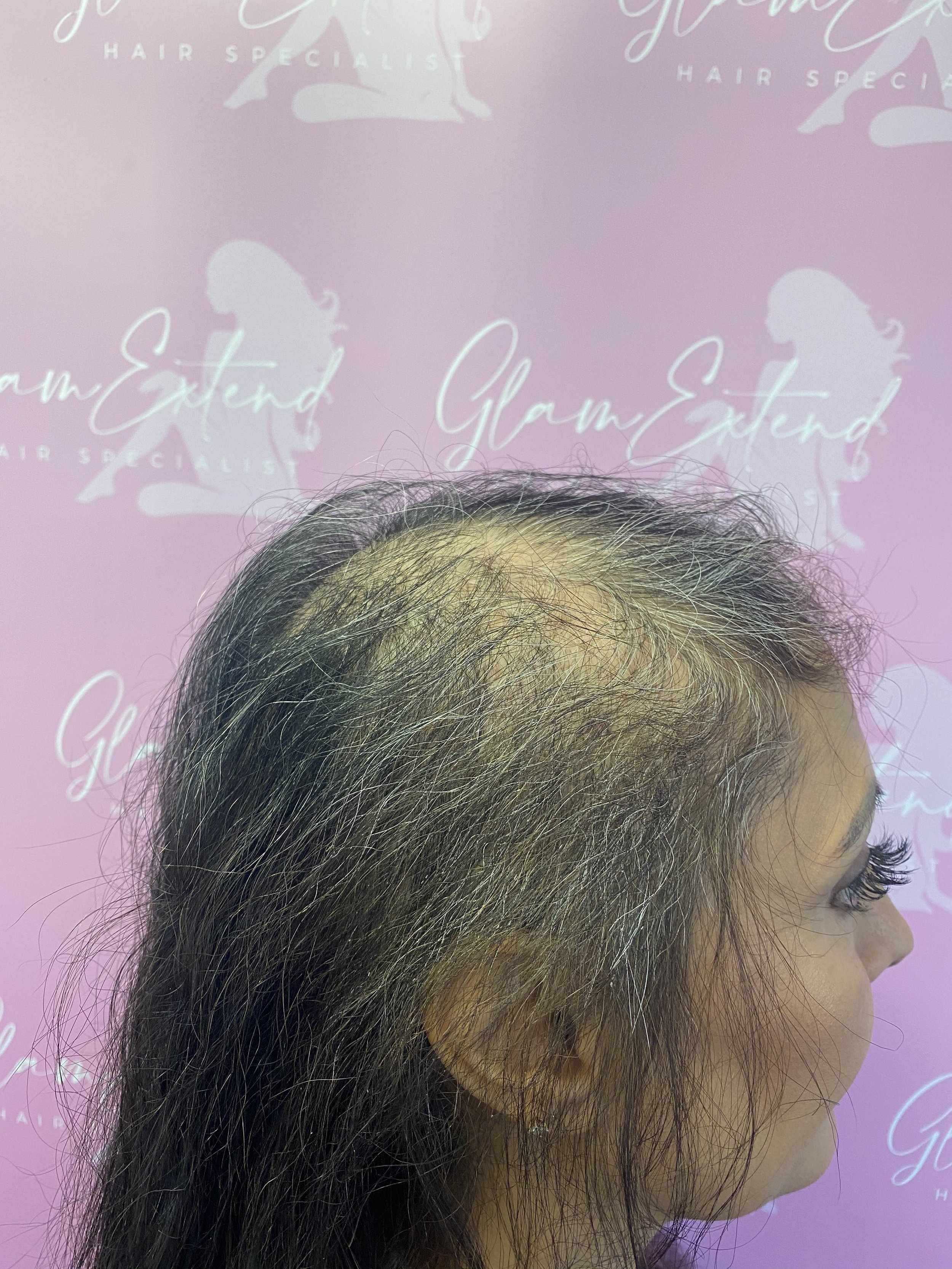
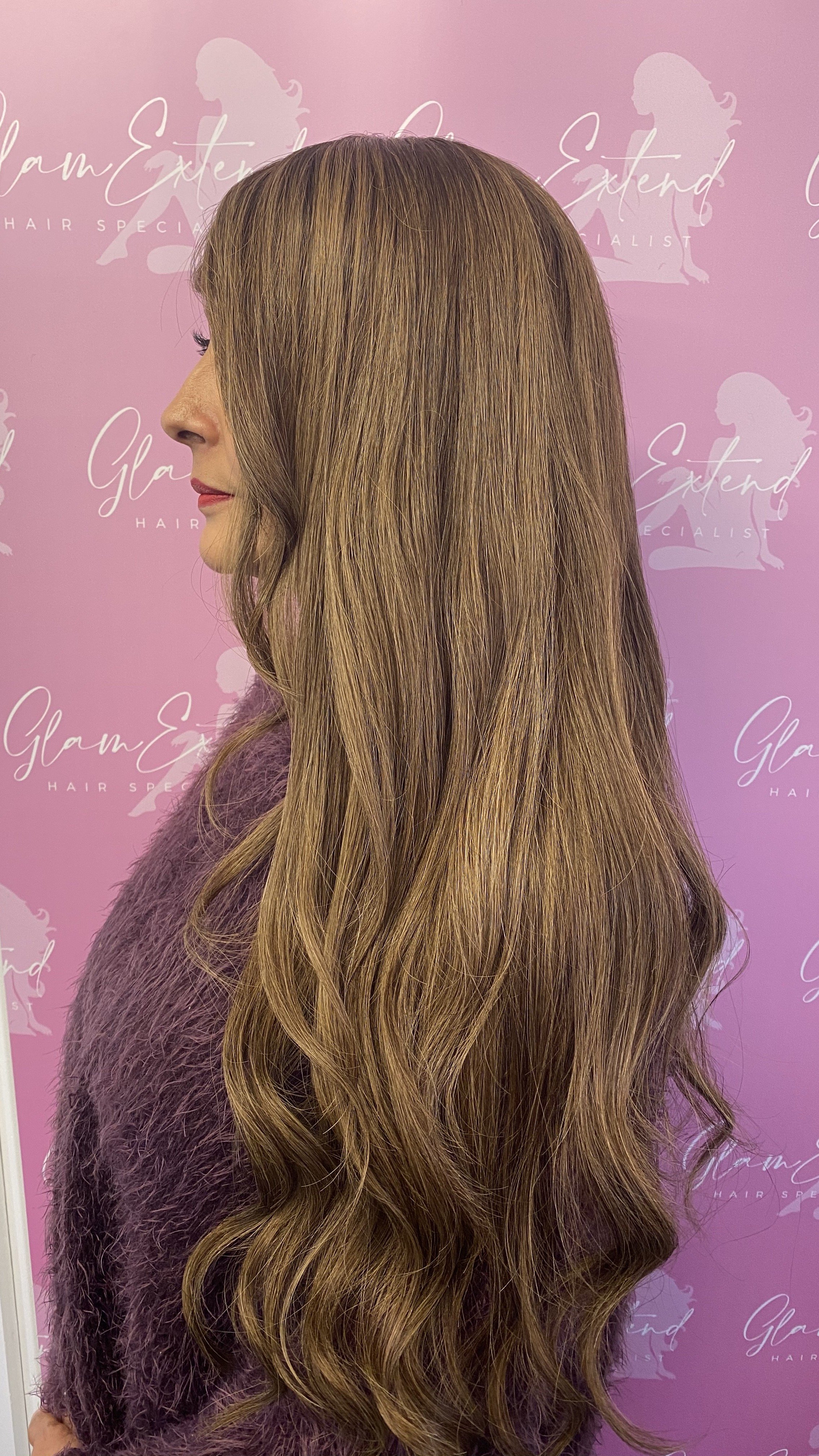
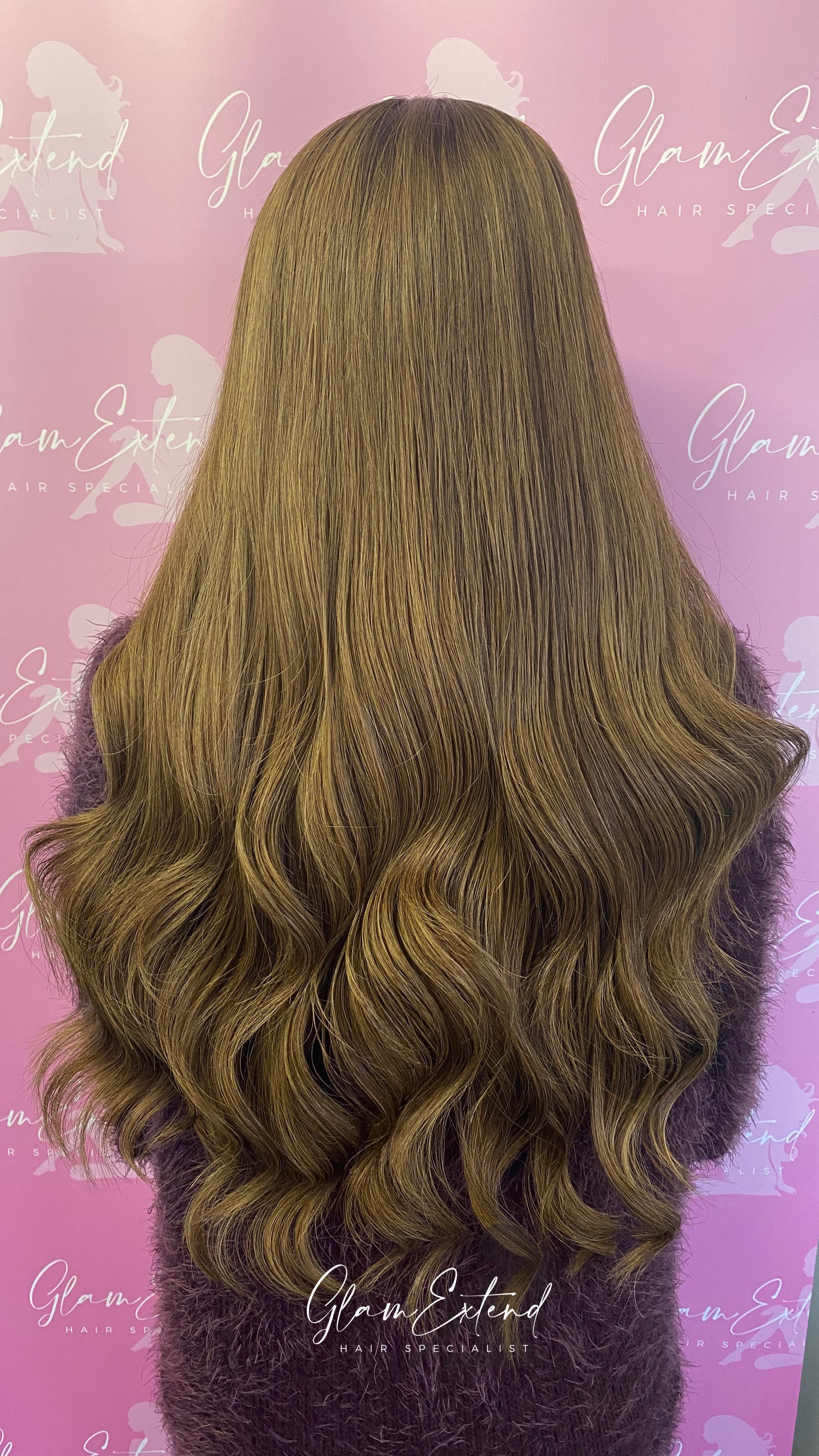
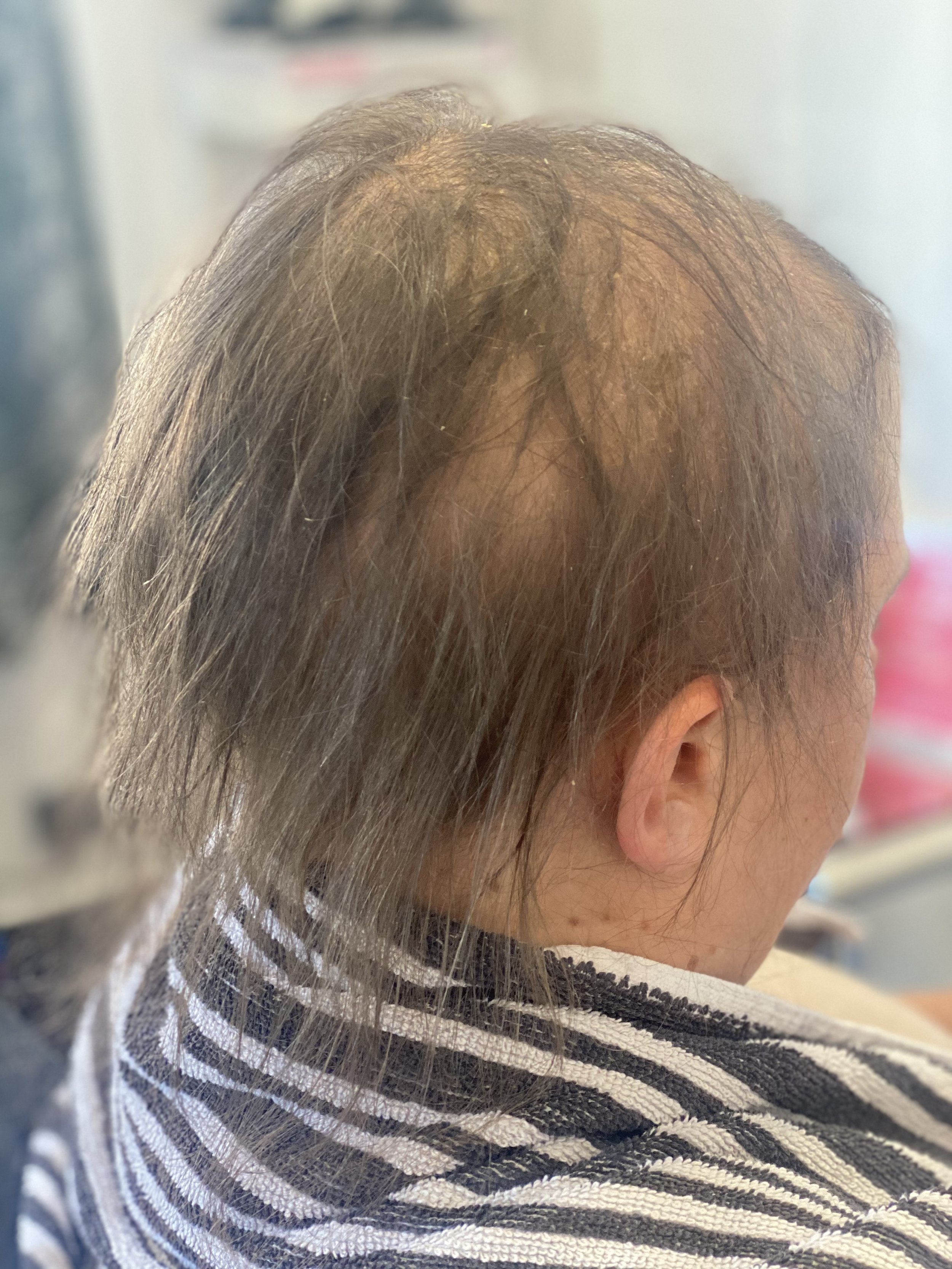
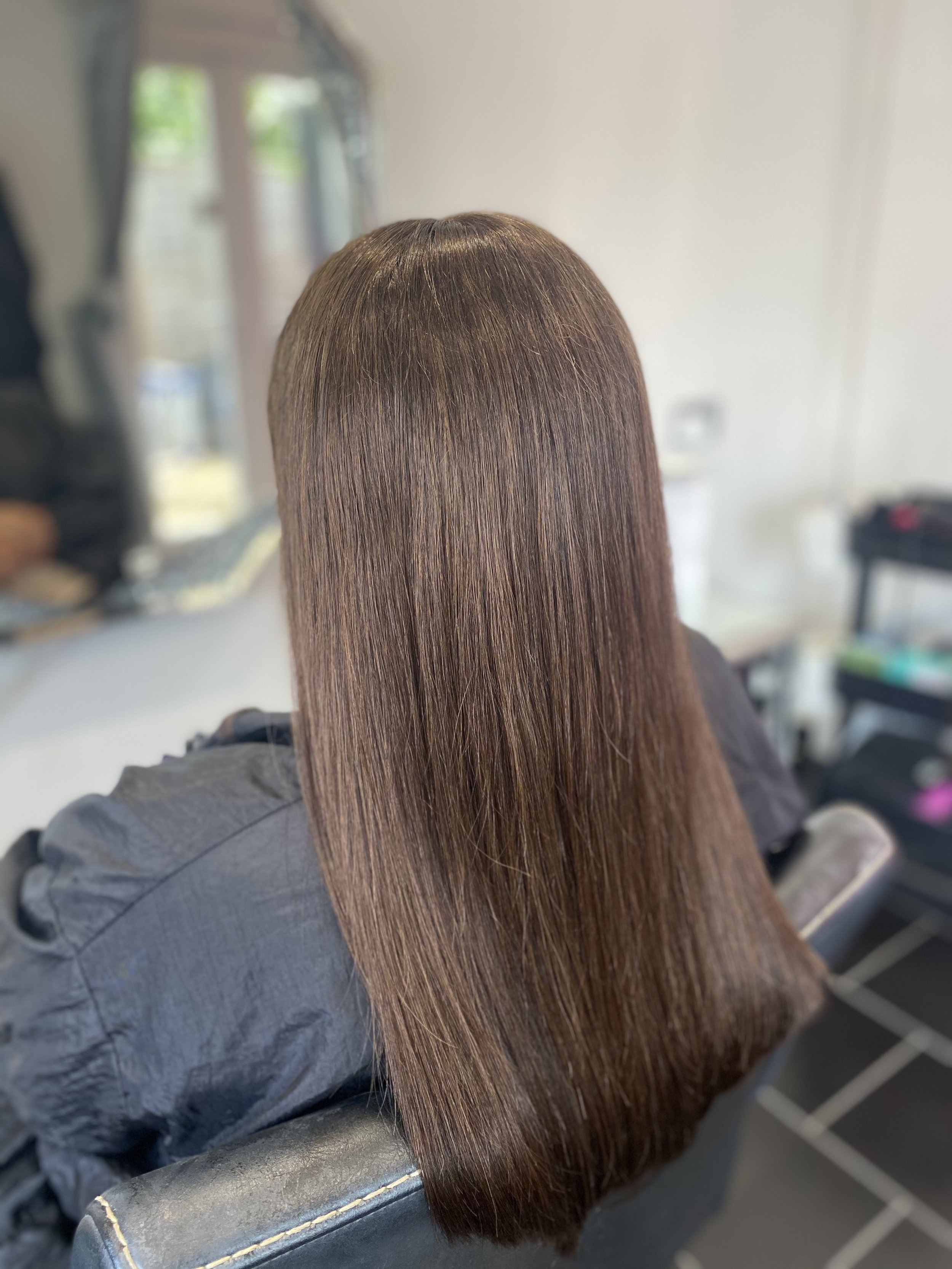
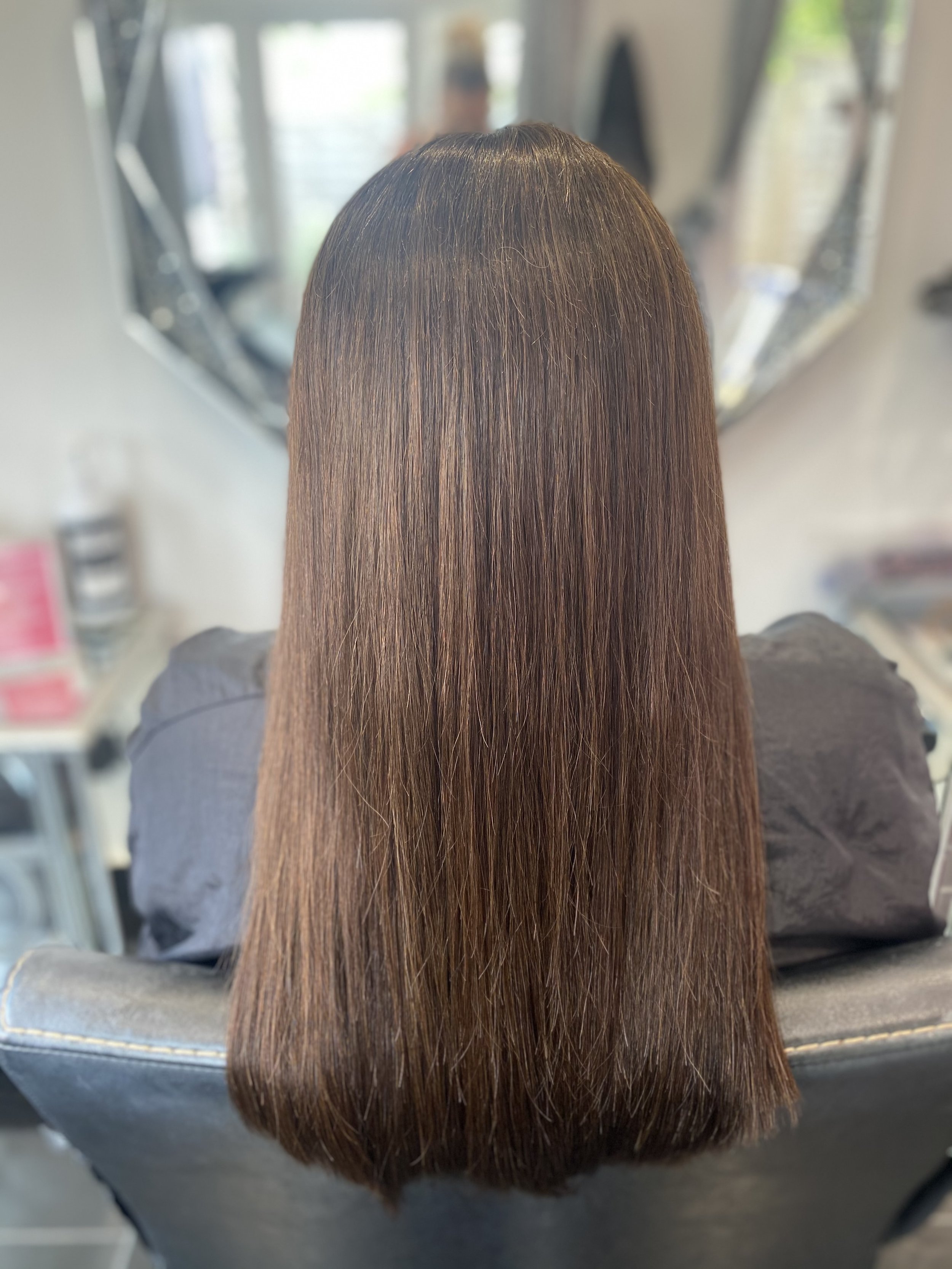
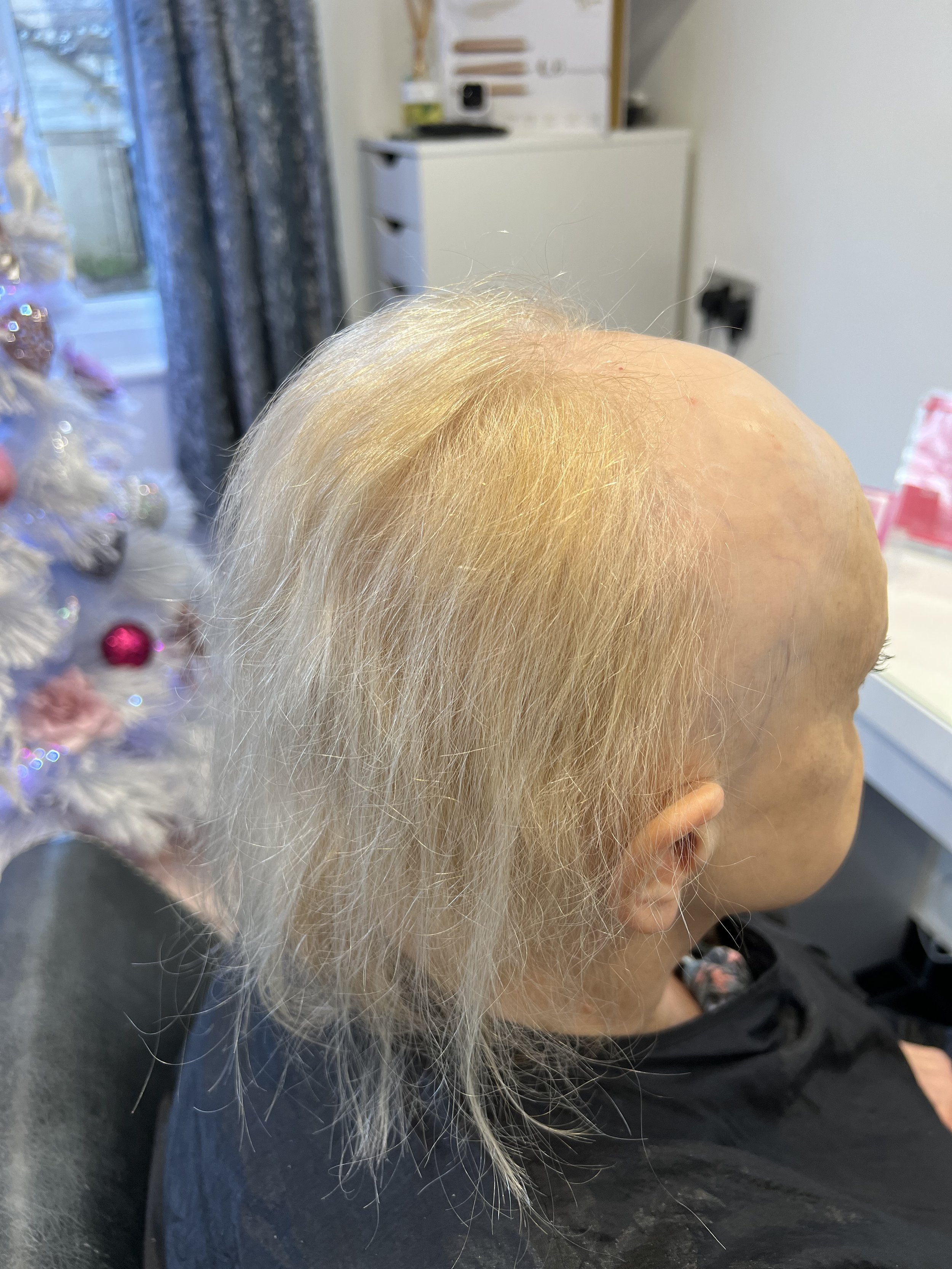
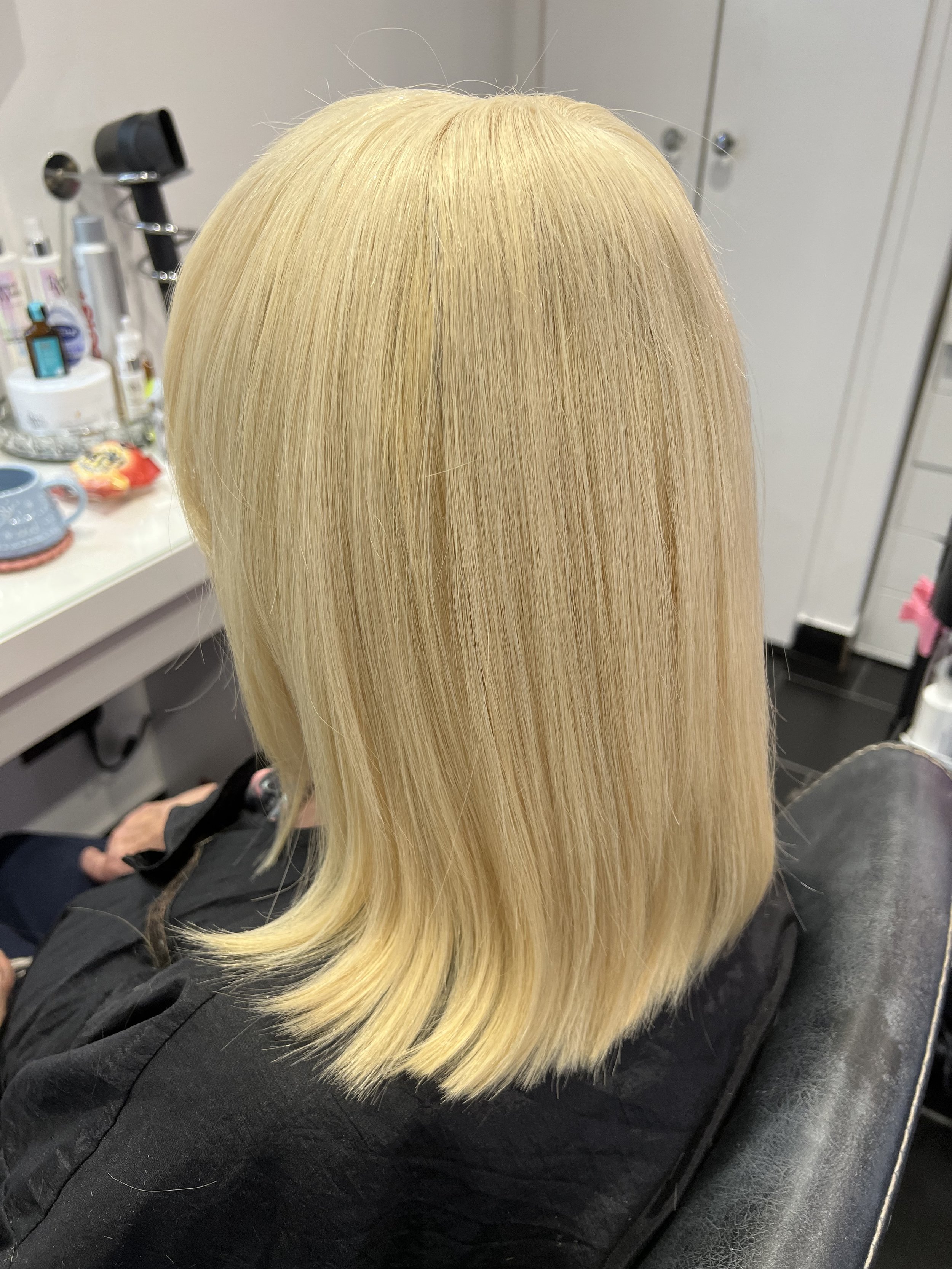
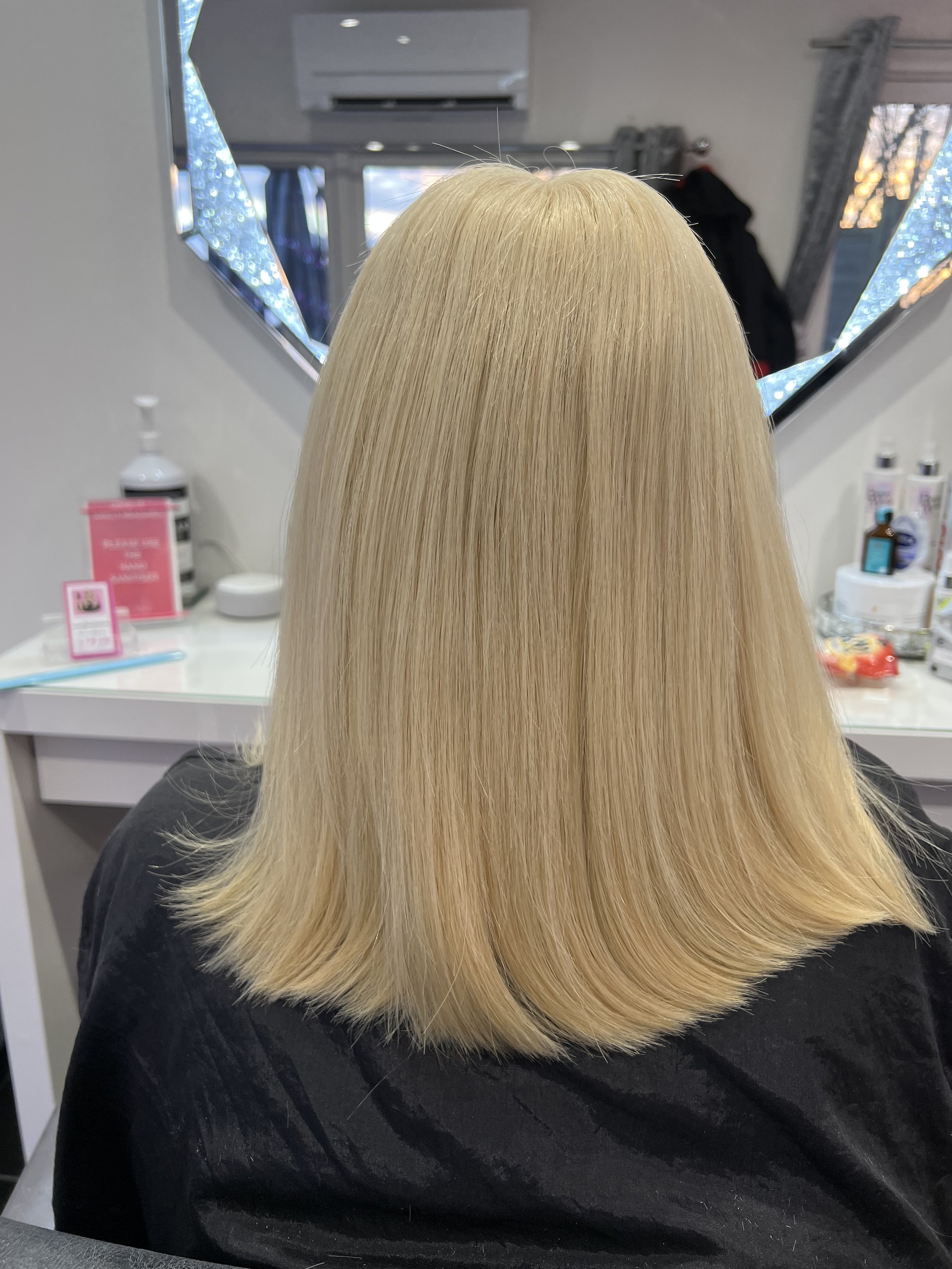
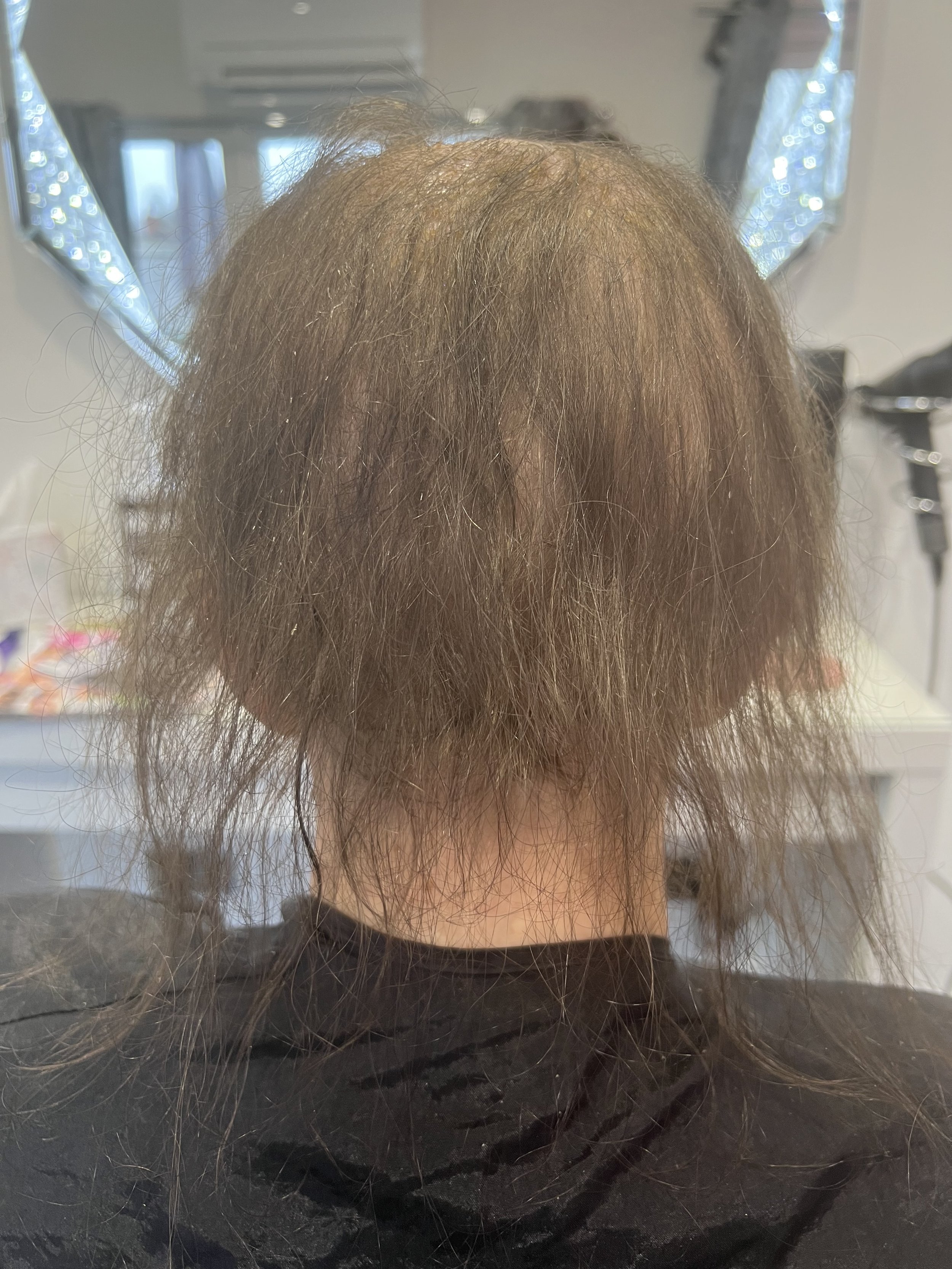
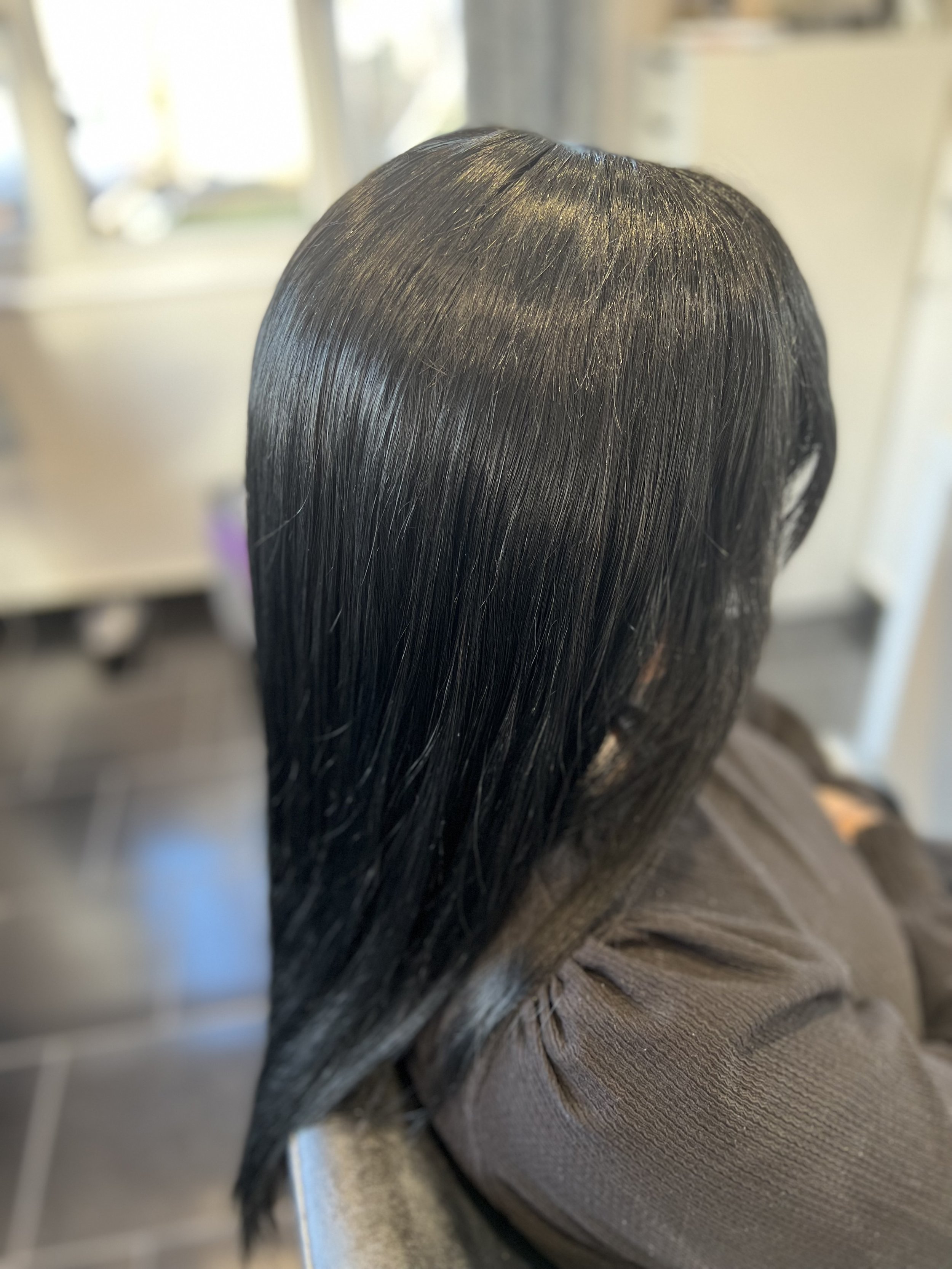
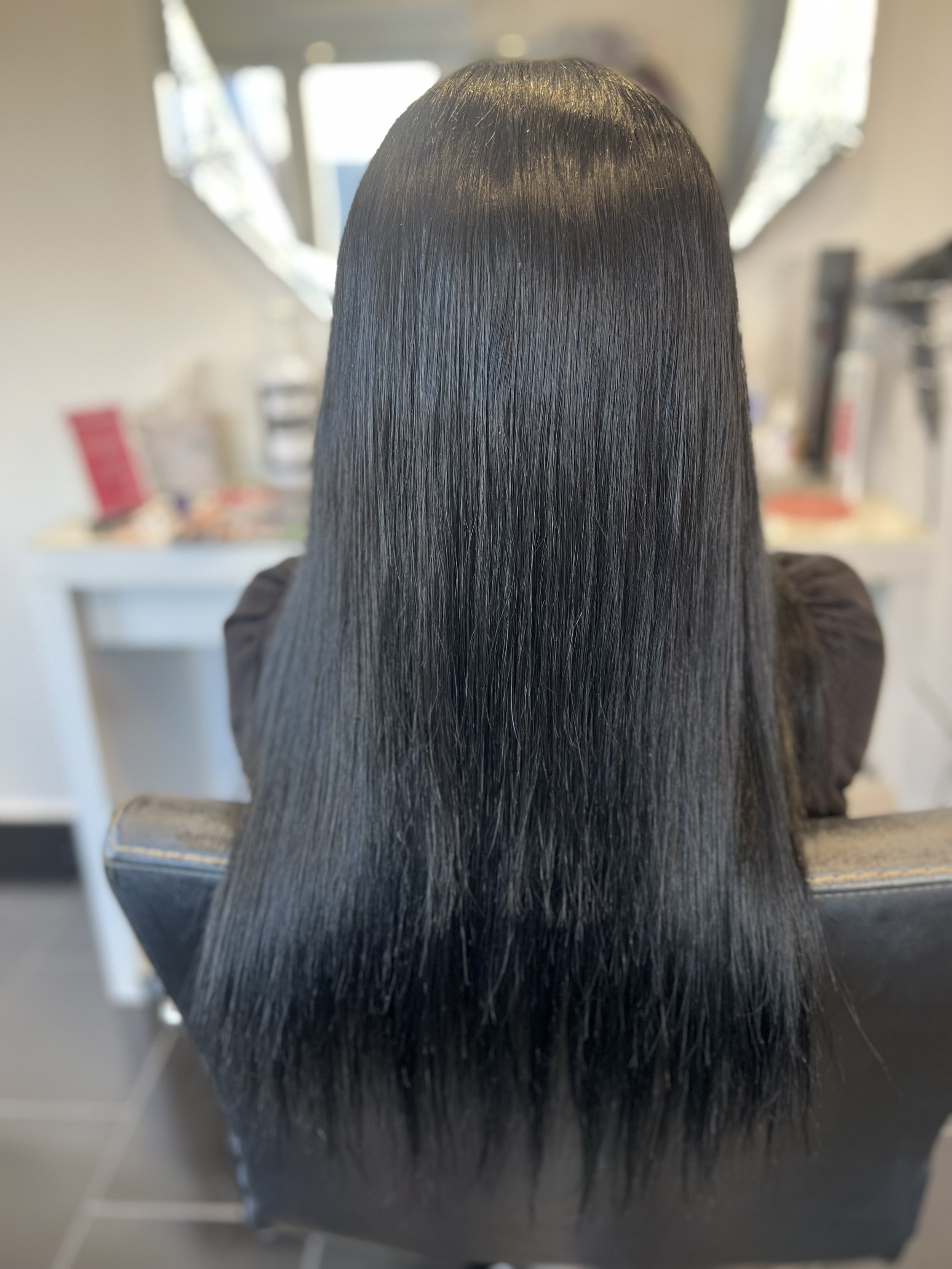
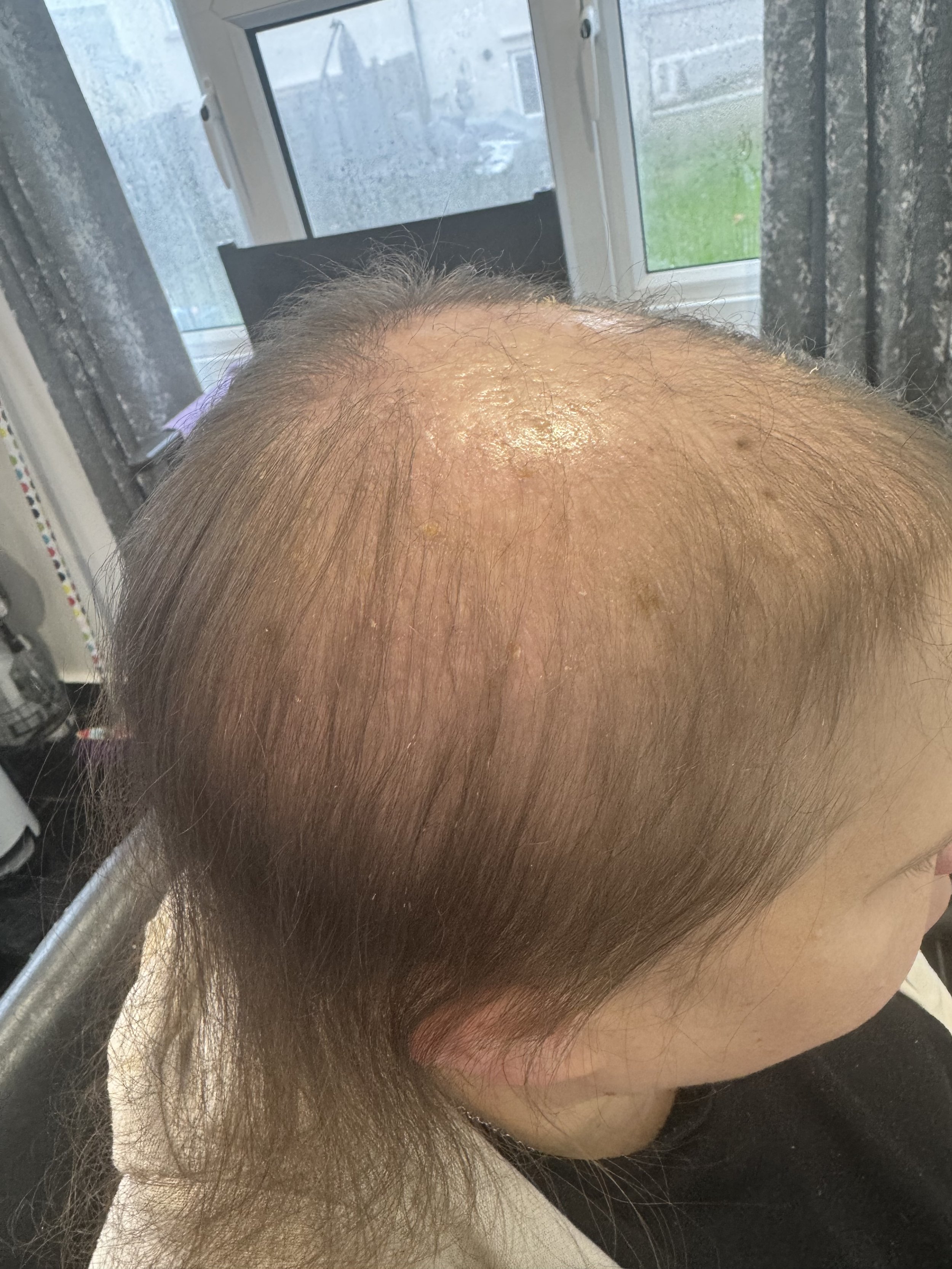
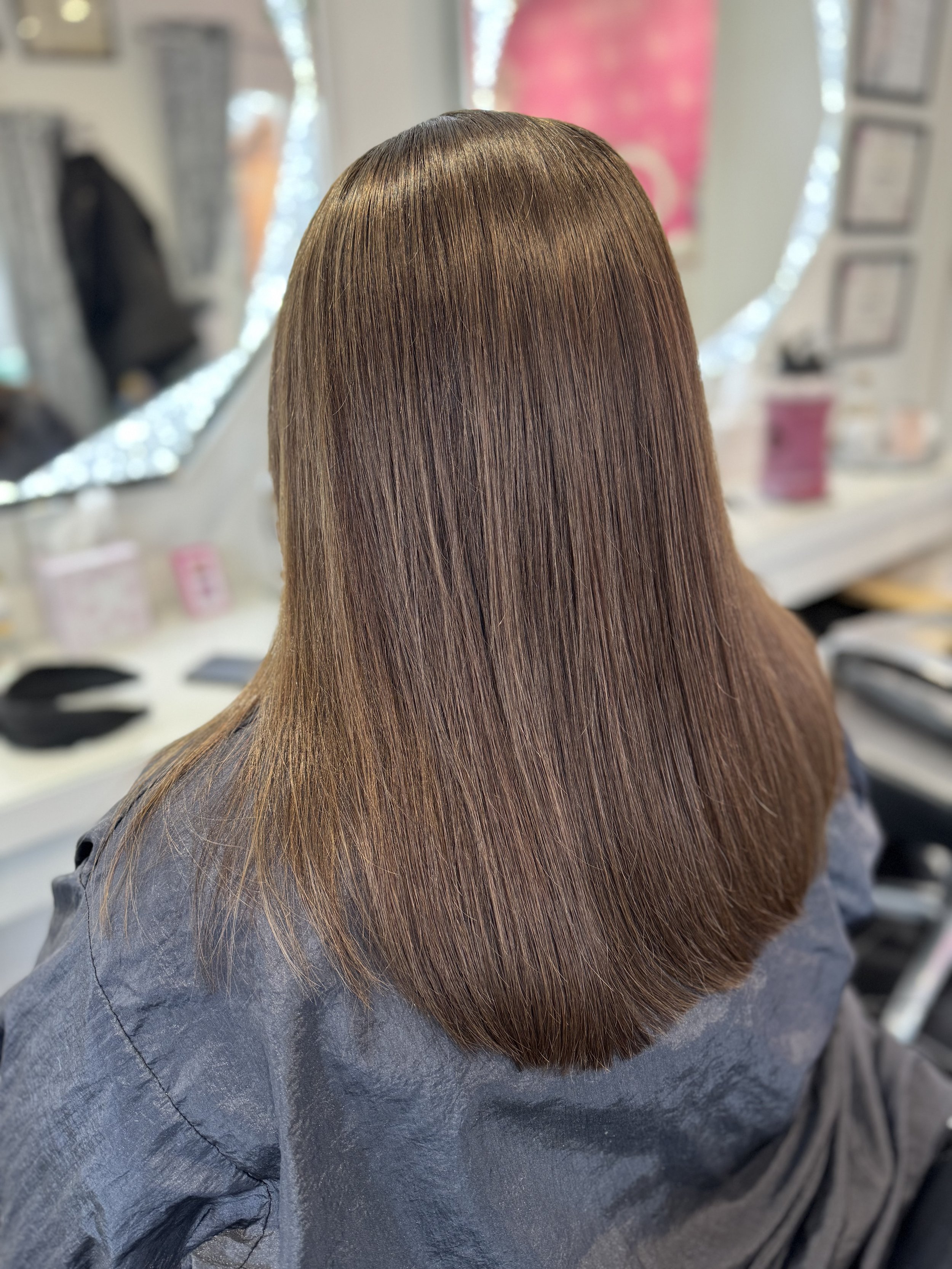
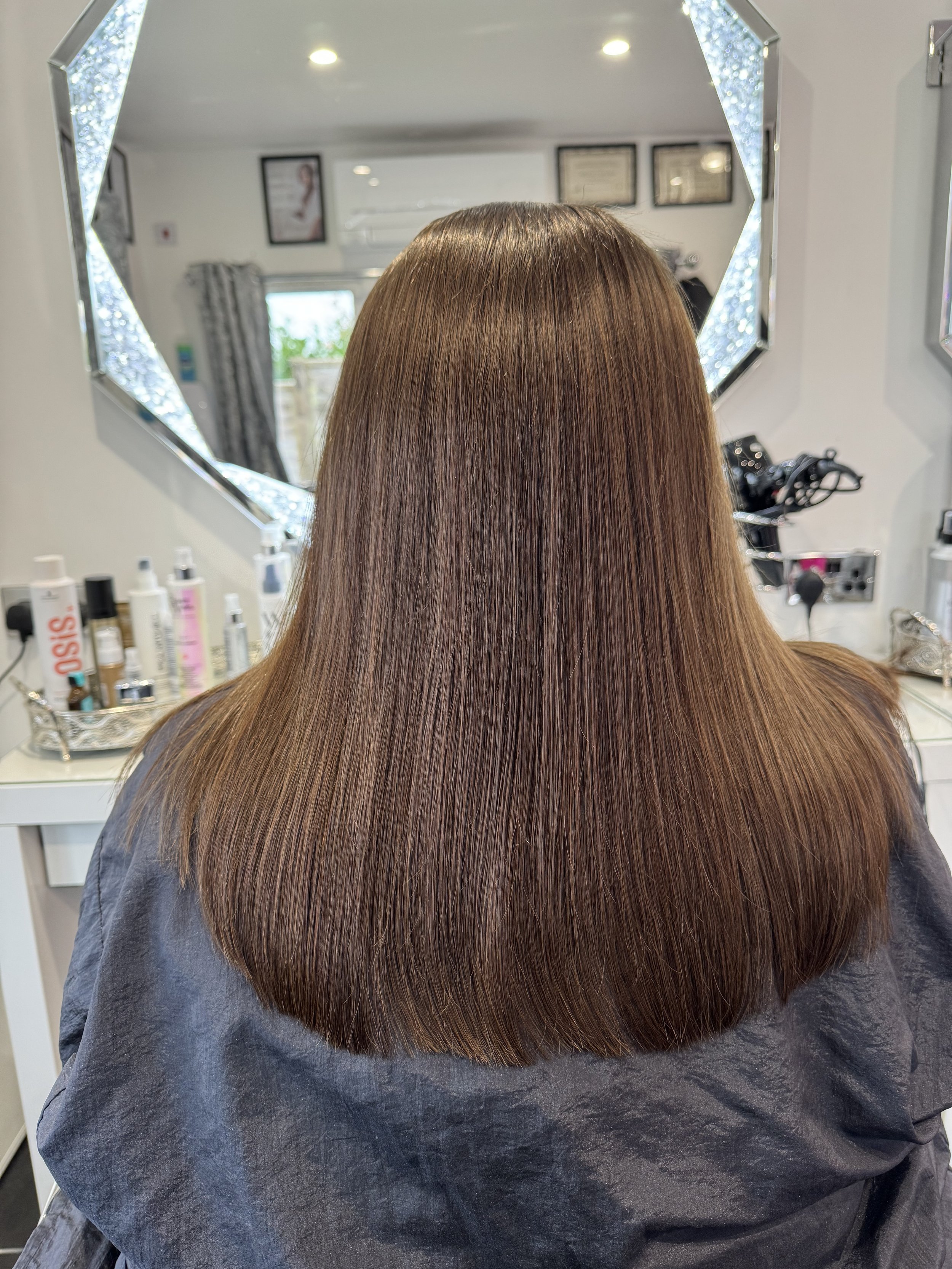
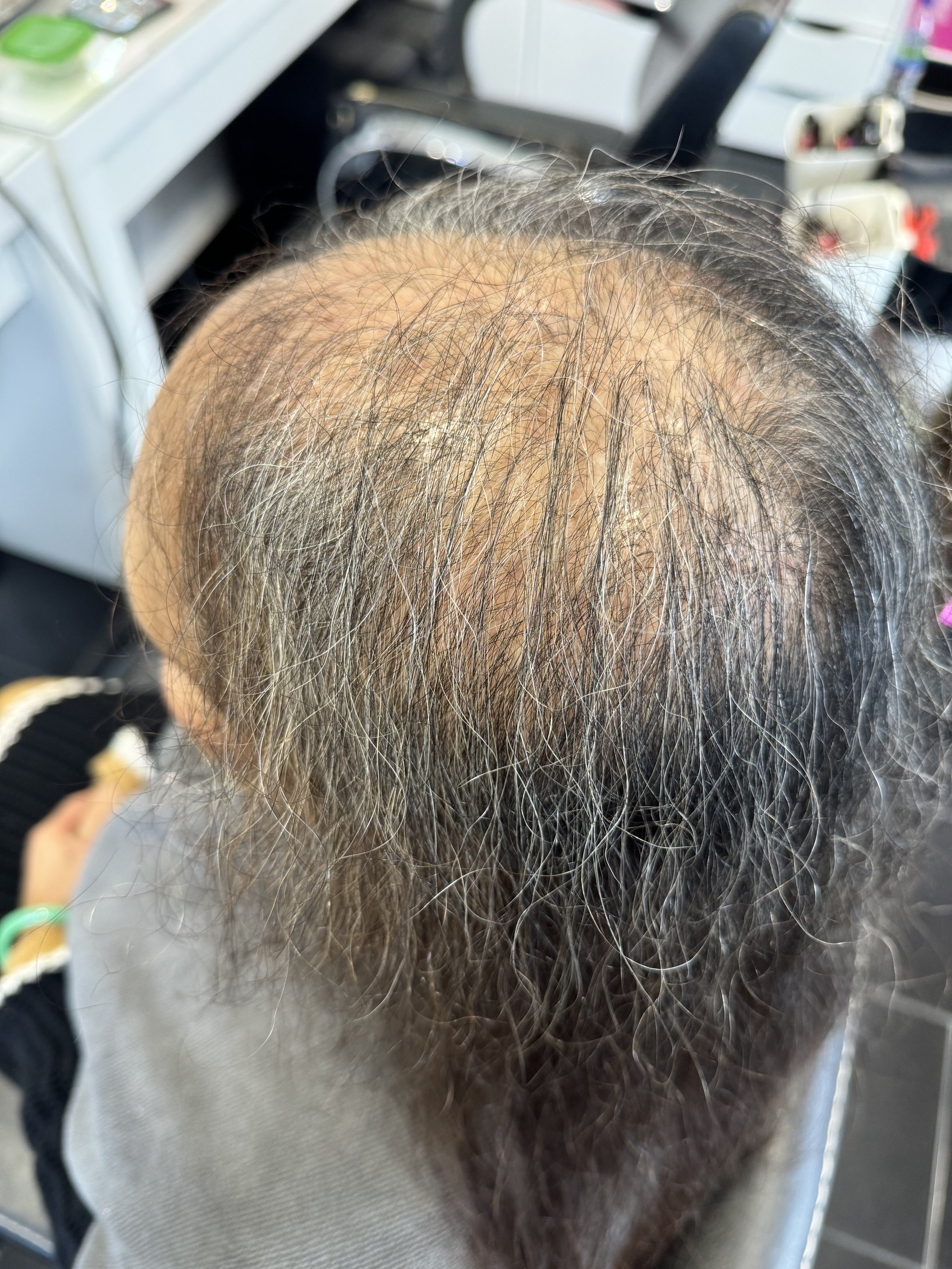
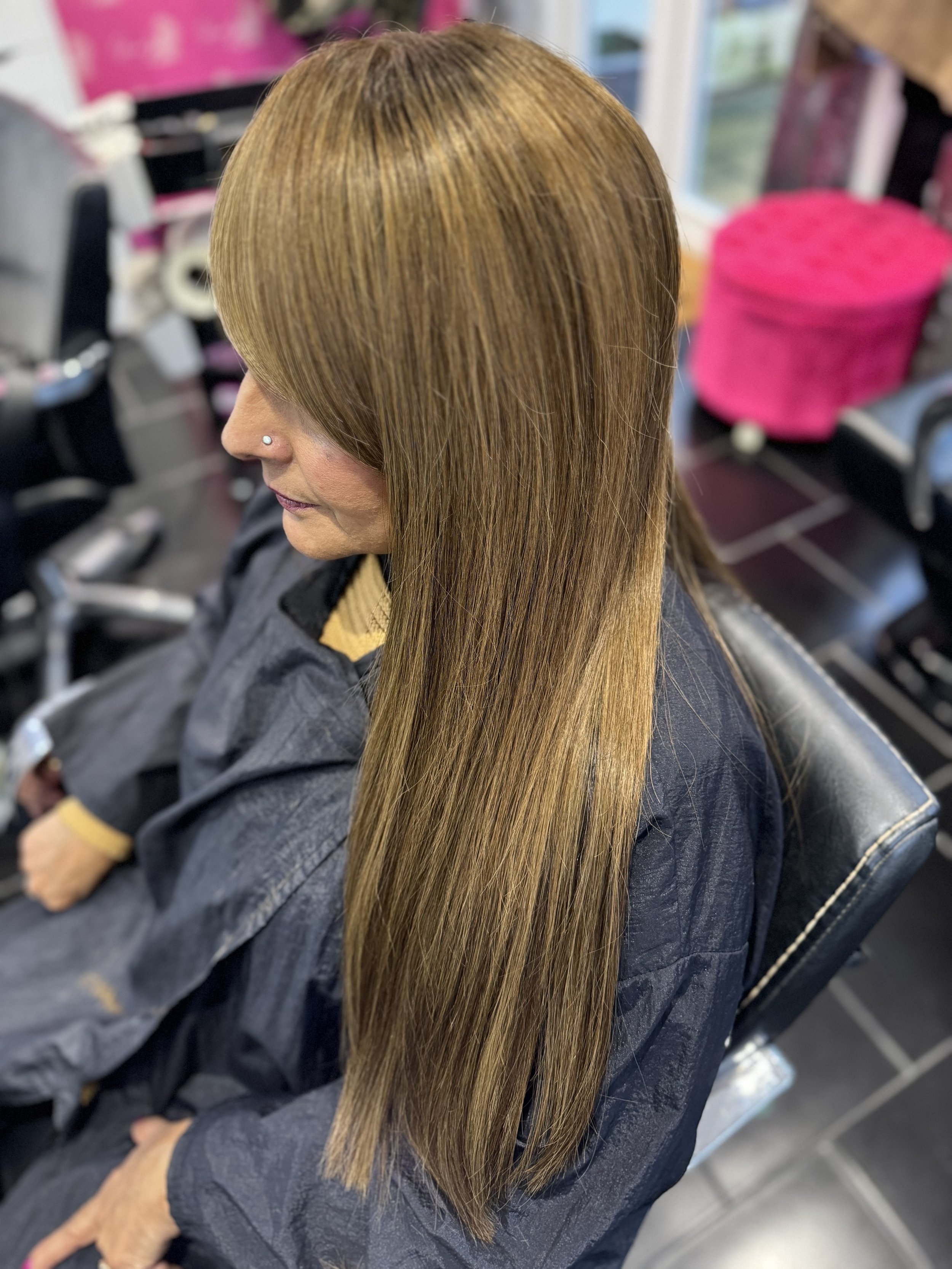
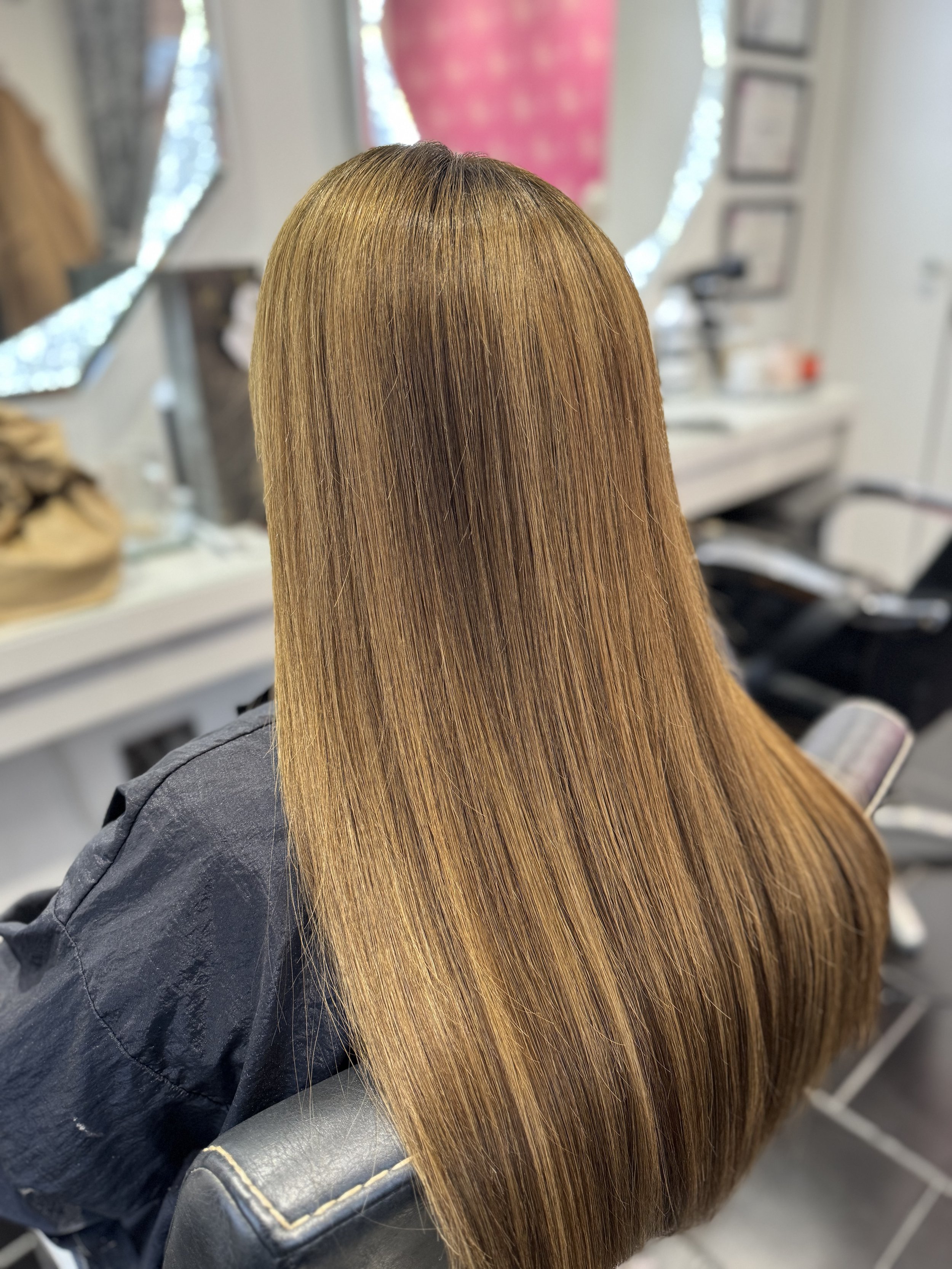
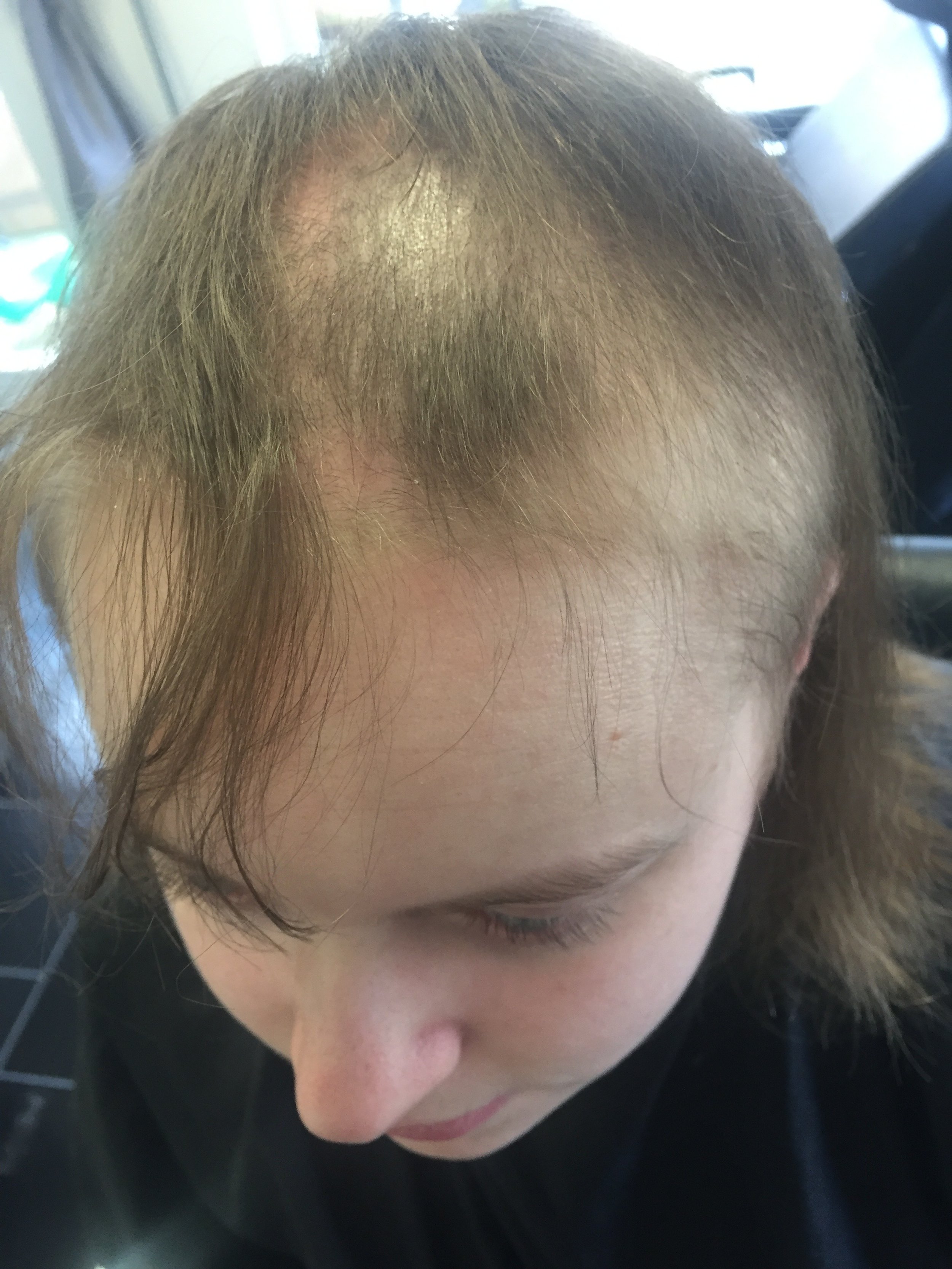
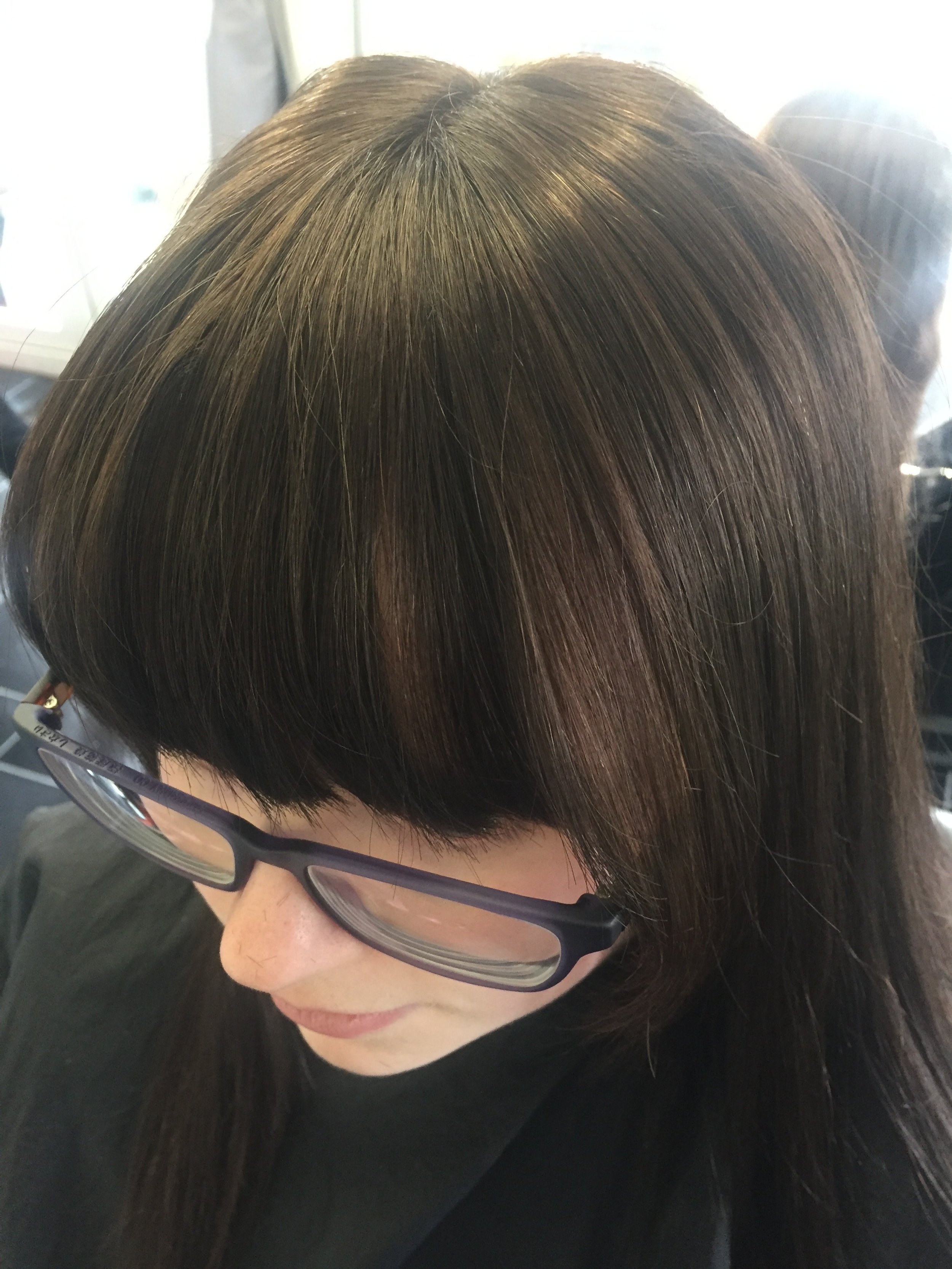

Hair Loss
Glam Extend covers all aspects of hair loss, which is long lasting, natural looking, easy to maintain, but most of all - cost effective. Glam Extend offers a leading replacement hair loss solution using a Mesh Integration system. With Glam Extend's hairdressing and wig making experience we can achieve the look you've always wanted or what you used to have.
With no glue, chemicals or damage to your own hair, you can go ahead... style, wash, straighten, curl, wear it up or down, long or short.... ENJOY your hair once more! While wigs and hair pieces may be appropriate for some hair loss, they're not for everyone and can limit your everyday life. With Glam Extend's System you can resume with your everyday life without the worry.
With the correct advice, hair loss can be manageable and your confidence and self-esteem can grow once more. Glam Extend's Hair System is completely cosmetic and does not damage existing hair. Most importantly, I work with your hair, not against it, to create your style and your look.
Hair Loss Conditions
Doctors underestimate the seriousness of female hair loss according to a new study. A study published in the European Journal of Dermatology reveals the psychological and quality-of-life impact experienced by women suffering from hair loss. There's no need to suffer alone... We cover all aspects of hair loss including chemotherapy, radiotherapy, cranial surgery, alopecia, alopecia areata, trichotillomania, androgenetic alopecia, chemical damage and many more.
Alopecia
Alopecia means loss of hair from the head or body. It can mean baldness, a term generally reserved for pattern alopecia or androgenic alopecia. Compulsive pulling of hair (trichotillomania) can also induce hair loss. Hairstyling routines such as tight ponytails or braids may cause traction alopecia. Both hair relaxer solutions and hot hair irons can also induce hair loss. In some cases, alopecia is due to underlying medical conditions, such as iron deficiency. Generally, hair loss in patches signifies alopecia areata.
Alopecia areata typically presents with sudden hair loss causing patches to appear on the scalp or other areas of the body. If left untreated, or if the disease does not respond to treatment, complete baldness can result in the affected area, which is referred to as alopecia totalis. When the entire body suffers from complete hair loss, it is referred to as alopecia universalis. It is similar to the effects that occur with chemotherapy.
Androgenetic Alopecia
Androgenetic alopecia is male pattern baldness. It shows a strong familial trait and tends to affect men from their late teens onwards, becoming progressively more common with advancing age. The two patterns are bitemporal recession and a central recession to produce a characteristic horse-shoe shape of remaining hair. Women also suffer from it to a less obvious extent.
There is a diffuse thinning of hair over the crown (the Ludwig pattern). The thinning of hair in women may become rather more pronounced after the menopause when there are fewer oestrogens to counteract the androgens. Men tend to have baldness whilst women have thinning of hair and preservation of the frontal area. The condition is a matter of end-organ sensitivity to androgens and men who are deficient on their head characteristically have an abundance of hair over the rest of their bodies. If a woman presents with male pattern baldness it is worth considering if she has abnormal levels of androgens, especially if hirsute too.
One study found that androgenic alopecia was associated with metabolic syndrome in women but not in men. Polycystic ovarian syndrome (PCOS) gives high levels of androgens but alopecia is an uncommon presentation (1.7% in one study). Arrhenoblastoma is an uncommon androgen-secreting tumour of the ovary. Testosterone and dihydroepiandrosterone (DHEA) levels should be measured.
Anagen Effluvium
This is when hair production is arrested in the anagen phase. This mainly happens when cancer, chemotherapy, immunosuppression or radiotherapy causes rapid hair loss. Doxorubicin and cyclophosphamide are especially notorious but most antimitotics can have this effect. Rarely, anagen effluvium can be a feature of pemphigus vulgaris, or be caused by trauma, pressure or exposure to chemicals such as thallium, boron and arsenic.
Within a few months of stopping chemotherapy the hair will return. Patients undergoing cancer chemotherapy are, however, entitled to free NHS wigs. If the treatment includes hormonal manipulation that may induce hot flushes, a wig may be very uncomfortable to wear.
Minoxidil shortens the alopecia by about 50 days. Local cooling of the scalp may also be helpful.
Effluvium
This is when a physiological or hormonal stress triggers many hairs to move into telogen phase. When new hairs appear in anagen phase they push out the telogen hairs and this is between one and six months, on average three months, after the initial insult. This can be an acute or chronic condition but the chronic condition may go unnoticed. The acute condition may be precipitated by a variety of factors:
Acute febrile illness, severe infection, major surgery and severe trauma.
Scalp disease in the form of psoriasis and seborrhoeic dermatitis or contact dermatitis of the scalp.
Chronic illness such as malignancy, particularly lymphoproliferative malignancy and any chronic debilitating illness, such as systemic lupus erythematosus, end-stage chronic renal failure or liver failure.
Pregnancy, delivery and stopping hormonal contraceptives.
Crash dieting, anorexia nervosa, low protein intake and chronic iron deficiency.
Heavy metal poisoning, including selenium, arsenic and thallium.
Medications, especially beta-blockers, anticoagulants, retinoids (including excess vitamin A), carbamazepine and immunisations.
Management is the correction of any matters that require attention, such as poor diet and reassurance that hair will return in a matter of months. Minoxidil is occasionally prescribed for this condition.
Alopecia Areata
This condition is of unknown aetiology, although there is much support for an autoimmune component. It is more common in acquired thyroid disease, vitiligo, diabetes and collagen diseases. Stress is sometimes given as a factor but it may be that the disease is the cause rather than the result of stress. There is a tendency to run in families, especially the more severe cases and it is linked to some HLA antigens.
The circular pattern of hair loss is characteristic. There are usually smooth round or oval patches with normal skin devoid of hair. Exclamation mark hairs taper towards the proximal end and are said to be pathognomonic but not invariable. Differential diagnosis is with tinea capitis and trichotillomania.
Involvement of nails, usually fingernails, is reported to a variable extent. Studies suggests a figure of 10-15%. Nail changes may come before or after the alopecia. The most common lesions are thimble pitting, usually suggestive of psoriasis with psoriatic arthropathy of the local distal interphalangeal (DIP) joint. Beau's lines are also reported. They usually represent loss of growth during serious illness.
The condition can strike at any age, including in childhood but the peak incidence is between 15 and 30 years of age. There may be a burning sensation or pruritus in some cases. Around 4 patients in 5 have a single lesion, 1 in 8 has two lesions and the rest have multiple lesions.
There is no correlation between number and severity. Alopecia areata can affect any area, although the scalp is the most common. The beard is affected in about a quarter of men and, more rarely, eyebrows or extremities may be involved. Loss of 40% of the hair or more occurs in only about 1 in 10. More extensive forms occur in 7%. They are called alopecia totalis if all scalp hair is lost and alopecia universalis if all body hair, including eyebrows, is lost.
Trichotillomania
Trichotillomania is the compulsive urge to pull out (and in some cases, eat) one's own hair leading to noticeable hair loss, distress and social or functional impairment. It is classified as an impulse control disorder and is often chronic and difficult to treat.
Trichotillomania may be present in infants but the peak age of onset is 9 to 13. It may be triggered by depression or stress. Common areas for hair to be pulled out are the scalp, eyelashes, eyebrows, arms, hands, and pubic hairs.
Trichotillomania is defined as a self-induced and recurrent loss of hair. It includes the criterion of an increasing sense of tension before pulling the hair and gratification or relief when pulling the hair. However, some people with trichotillomania do not endorse the inclusion of "rising tension and subsequent pleasure, gratification, or relief" as part of the criteria; because many individuals with trichotillomania may not realise they are pulling their hair, patients presenting for diagnosis may deny the criteria for tension prior to hair pulling or a sense of gratification after hair is pulled.
Trichotillomania is often not a focused act, but rather hair pulling occurs in a "trance-like" state; hence, trichotillomania is subdivided into "automatic" versus "focused" hair pulling. Children are more often in the automatic, or unconscious, subtype and may not consciously remember pulling their hair. Other individuals may have focused, or conscious, rituals associated with hair pulling, including seeking specific types of hairs to pull, pulling until the hair feels "just right", or pulling in response to a specific sensation. Knowledge of the subtype is helpful in determining treatment strategies/
Trichotillomania is usually confined to one or two sites, but can involve multiple sites. The scalp is the most common pulling site, followed by the eyebrows, eyelashes, face, arms, and legs. Some less common areas include the pubic area, underarms, beard, and chest. The classic presentation is the "Friar Tuck" form of vertex and crown alopecia. Children are less likely to pull from areas other than the scalp.
People who suffer from trichotillomania often pull only one hair at a time and these hair pull episodes can last for hours at a time. Trichotillomania can go into relapse-like states where the individual may not experience the urge to "pull" for days, weeks, months, and even years.
Individuals with trichotillomania exhibit hair of differing lengths; some are broken hairs with blunt ends, some new growth with tapered ends, some broken mid-shaft, or some uneven stubble. Scaling on the scalp is not present, overall hair density is normal, and a hair pull test is negative (the hair does not pull out easily). Hair is often pulled out leaving an unusual shape. Individuals with trichotillomania may be secretive or shameful of the hair pulling behaviour.
An additional psychological effect can be low self-esteem, often associated with being shunned by peers and the fear of socialising due to appearance and negative attention they may receive. Some people with trichotillomania wear hats, wigs, false eyelashes, eyebrow pencil, or style their hair in an effort to avoid such attention. There seems to be a strong stress-related component. In low-stress environments, some exhibit no symptoms (known as "pulling") whatsoever. This "pulling" often resumes upon leaving this environment. Some individuals with trichotillomania may feel they are the only person with this problem due to low rates of reporting.
Aftercare for Human Hair Nets
Now you have your beautiful hair please follow the hair extensions aftercare. The only difference is your net is connected to your remaining hair.
Please choose a Sulphate Free Shampoo and a good conditioner recommended for hair extensions and suggested by Sam.
When shampooing it is always recommended to wash under a shower, never over/in a bath.
Shampoo your hair twice using no more than a fifty pence piece amount of shampoo. It is important for anyone wearing a net that you rinse for much longer to give the water time to rinse through the net and layers of hair.
Once you are ready to condition please again be careful not to rub into the bonds as this can make them slip down the hair.
It’s best to use conditioner from the ears down and avoid the rooted area.
Always follow the hair extensions advice for washing and styling your net.
Remember to fix your parting in place and your fringe then apply any leave in products.
You can now dry/style your hair as advice and recommended in the hair extensions section.
